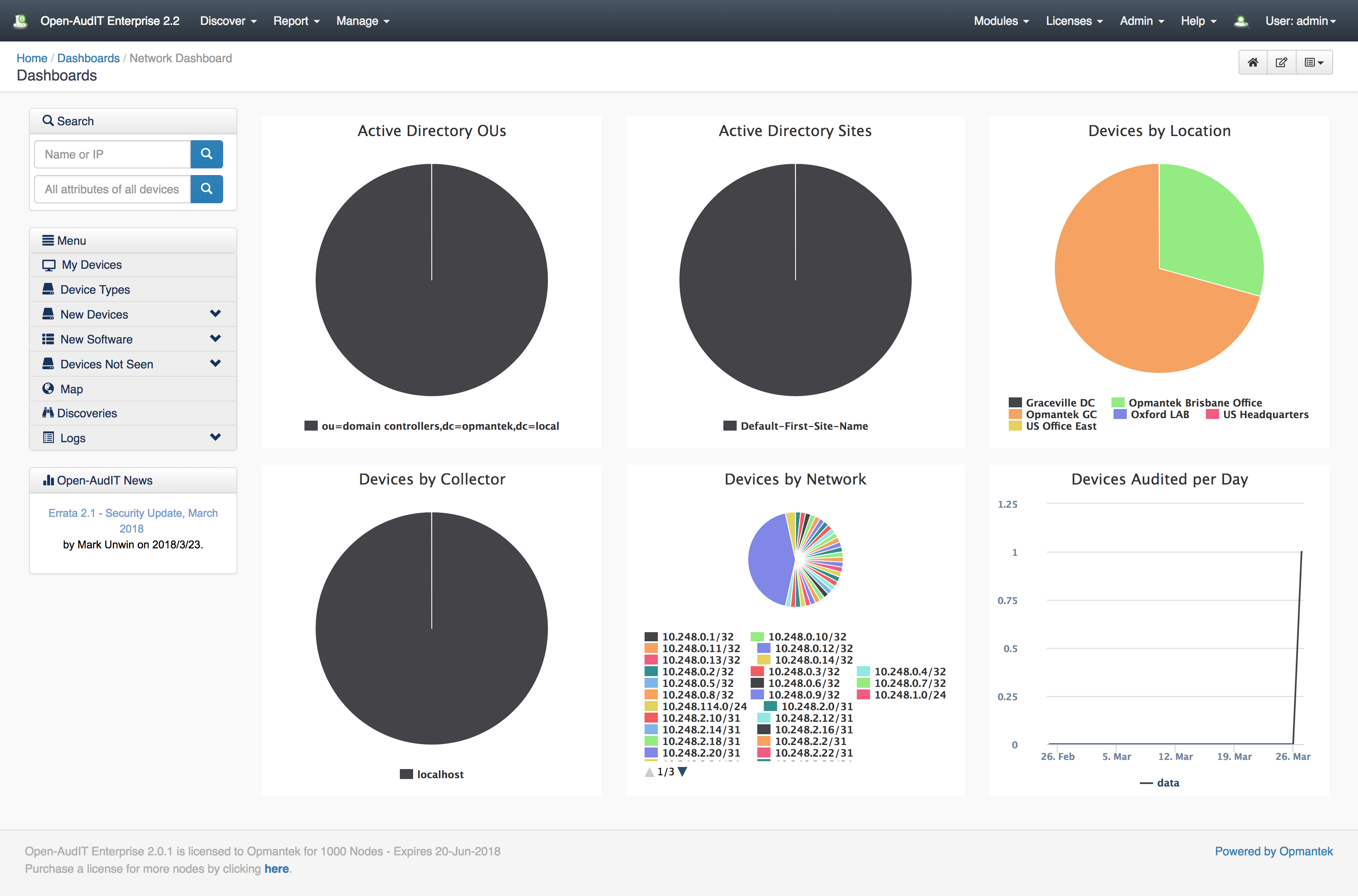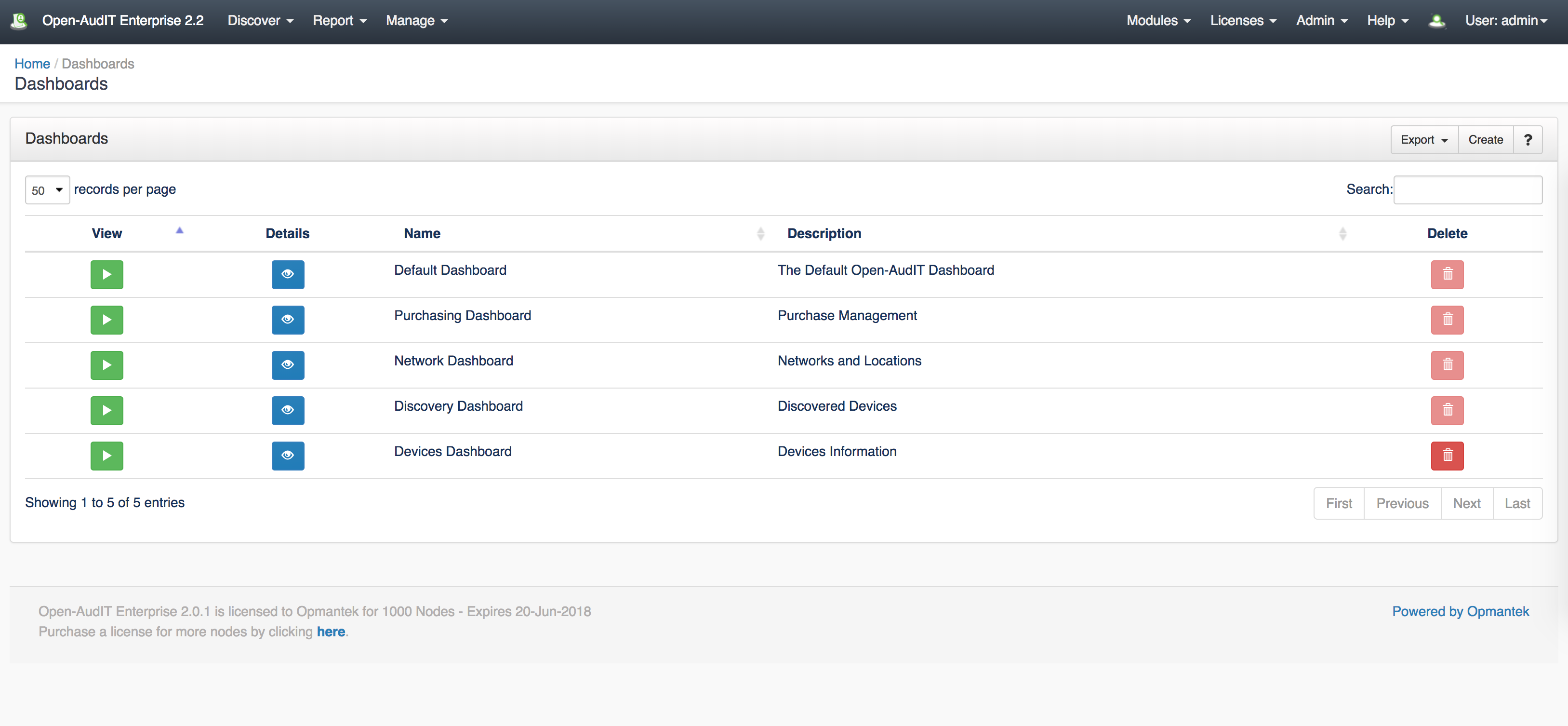As at Open-AudIT 2.2, we now ship with several pre-configured Dashboards. If you are a Professional user, you can select between two of these and set it as your default page when you logon. If you are an Enterprise user, you can not only select between the five preconfigured Dashboards, but you also have the ability to create your own.
The page How do Dashboards and Widgets work? may be of some assistance here.
Dashboards use Widgets, of which we supply over thirty as a default set. Professional users cannot alter these, but an Enterprise user has complete customisation abilities - including creating your own.
Dashboard provide "at a glance" important visibility for changes occurring on your network as well as providing quick links to device types, manufacturers, and operating systems and so much more.
Database Schema
The database schema
...
can
...
be found in the application is the user has database::read permission by going to menu:
...
Admin -> Database -> List
...
Tables, then clicking on
...
| Code Block |
|---|
CREATE TABLE `dashboards` (
`id` int(10) unsigned NOT NULL AUTO_INCREMENT,
`name` varchar(100) NOT NULL DEFAULT '',
`org_id` int(10) unsigned NOT NULL DEFAULT '1',
`type` enum('default','org','user','') NOT NULL DEFAULT '',
`user_id` int(10) unsigned NOT NULL DEFAULT '0',
`description` text NOT NULL,
`sidebar` enum('y','n') NOT NULL DEFAULT 'y',
`options` text NOT NULL,
`edited_by` varchar(200) NOT NULL DEFAULT '',
`edited_date` datetime NOT NULL DEFAULT '2000-01-01 00:00:00',
PRIMARY KEY (`id`)
) ENGINE=InnoDB DEFAULT CHARSET=utf8; |
...
the details button for the table.
API / Web Access
You can access the
...
collection using the normal Open-AudIT JSON based API. Just like any other collection
...
. Please
...
see The Open-AudIT API documentation for further details.
Access is provided as part of a roles permissions. Dashboards is a standard resource and can have create, read, update, delete and execute permissions.
The API routes below are usable from both a JSON Restful API and the web interface. The Web application routes are specifically designed to be called from the web interface (a browser).
API Routes
Request Method | ID | Action | Resulting Function | Permission Required | URL Example | Notes | Example Response |
|---|---|---|---|---|---|---|---|
| GET | n | collection | dashboards::read | /dashboards | Returns a list of dashboards. | ||
| POST | n | create | dashboards::create | /dashboards | Insert a new dashboards entry. | ||
| GET | y | read | dashboards::read | /dashboards/{id} | Returns a dashboards details. | ||
| PATCH | y | update | dashboards::update | /dashboards/{id} | Update the details of a dashboards entry. | ||
| DELETE | y | delete | dashboards::delete | /dashboards/{id} | Delete a dashboards entry. | ||
| EXECUTE | y | execute | execute | dashboards::read | /dashboards/{id}/execute | Execute a dashboards and return the resulting dataset. |
Web Application Routes
...
...
...
...
...
...
...
...
Default Items
Shipped are a set of default items. These can be found by going to menu: Help → Defaults → Dashboards.
...



